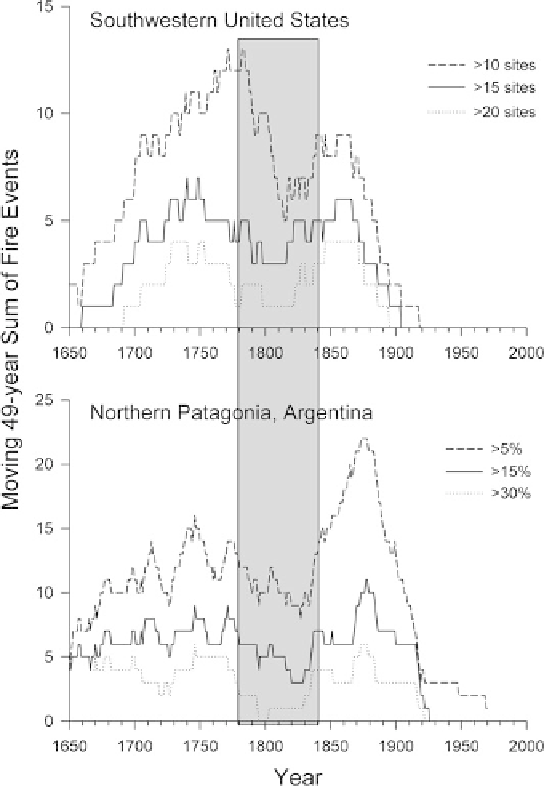Geoscience Reference
In-Depth Information
Fig. 9.13
Fire frequency changes in Patagonia, Argentina, and the southwestern United States.
Both regional composites from fire-scar networks show reduced fire frequency during the 1780s-
'moving' fire frequencies, computed as the sum of fire events that were synchronously recorded
by the indicated numbers or percentage of sites within the networks during 49-year windows, plot-
ted on the central (25th) year of the window (reprinted from
Global Ecology and Biogeography
,
permission granted from Wiley-Blackwell)
across western North America, extending from southern British Columbia to north-
in the fire-scar dataset was well correlated with ENSO (Pearson
r
<
0.001, between the first principal component of the 238 series and the D'Arrigo et al.
=−
0.47,
p

